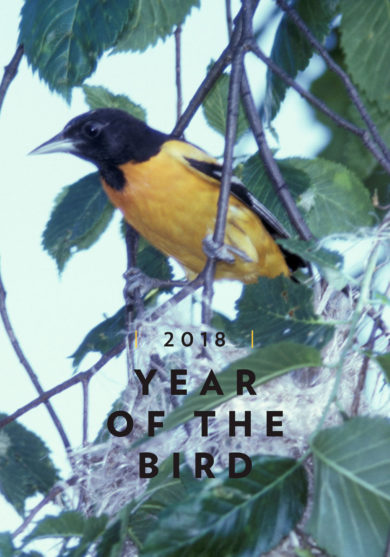
Baltimore Orioles frequent shade-grown coffee plantations in search of fruit and nectar. / © Roy Pilcher.
Three-quarters of the world’s coffee farms destroy forest habitat to grow coffee under full sun. When forests disappear, migratory songbirds do too. In order to combat critical losses of bird populations and their habitats, scientists at the Smithsonian Migratory Bird Center created Bird Friendly Coffee certification. With thoughtful consumption, coffee drinkers can help save songbirds one cup at a time.
“One of the greatest environmental challenges we face in the coming century is producing enough food for our growing population while minimizing our impact on biodiversity. Smithsonian’s Bird Friendly Coffee does just that,” said Pete Marra, director of the Smithsonian Migratory Bird Center (and member of VCE’s Advisory Council).
In the 1970s, sun coffee plantations quickly became the dominant means to produce coffee using a newly developed hybrid plant. But the cost to biodiversity was high. The natural forest is cleared and coffee trees are planted in tidy rows. The ground is kept clear of weeds, and pesticides and fertilizers are applied. Production is high, but so are the ecological costs.
Under natural conditions, coffee is an understory shrub that thrives in deep shade. Traditionally, small farmers grow coffee under a thick canopy of trees, usually without the use of chemicals. These rustic coffee plantations mimic a natural forest, complete with thick leaf litter covering the soil, humid and cool air, and plenty of birds. Scientists have found that a typical shade coffee planta- tion can harbor up to 90 percent more bird species than sun coffee. Bird Friendly Coffee plantations are home to 74 species of migratory birds commonly found in North America each summer, such as Baltimore Orioles, American Redstarts, Ruby-throated Hummingbirds, and many others.
Shade-grown coffee plantations are the next best thing to undisturbed forest habitat. But not all shade grown coffee is created equal. Coffee grown under the Smithsonian Migratory Bird Center’s Bird Friendly Coffee certification program is based on years of careful biological research. It literally has science behind the certification. Farms must meet stringent criteria for rich and structurally complex habitat. Other shade grown coffee may originate from plantations with just a single species of shade tree, heavily pruned and supporting little more biodiversity than sun grown plantations. The best shade for birds is diverse shade provided by up to 30 species of trees growing 10 to 65 feet tall creating a variety of microhabitats for birds and other biodiversity.
“Bird Friendly shade-grown coffees demonstrate that agriculture can not only promote biodiversity, but can also sequester carbon, fight climate change and save species,” says Marra.
Learn more about Bird Friendly Coffee at the Smithsonian Migratory Bird Center website.

Ahhhhhhhh………….that first sip in the a.m.
Thanks for this article. If we birders don’t buy bird-friendly coffee, who will? Yes, it’s more expensive, but probably not if all the environmental costs are factored in. We have been buying coffee from Birds&Beans for a couple of years now – it’s the best coffee I’ve ever had.
We also visited a Bird-friendly certified farm in Oaxaca last year and found it to be a great birding location.